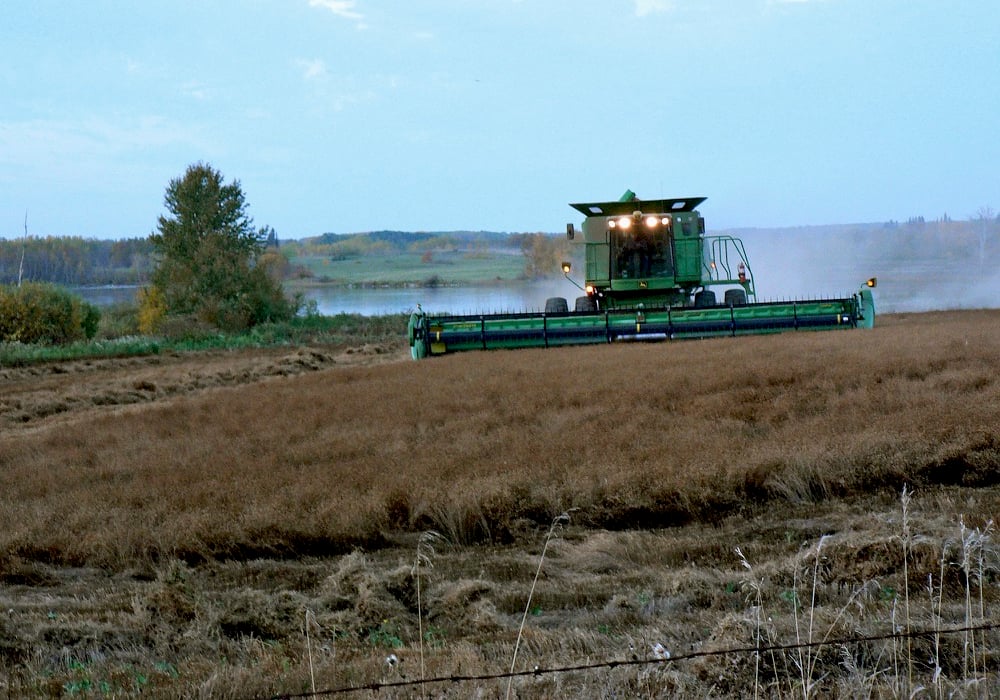Three farm organizations say its time to take a closer look at the Canadian Grain Commission now that producers are footing a larger share of its budget.
Representatives from the Canadian Canola Growers Association, Grain Growers of Canada and the Western Canadian Wheat Growers Association says farmers should have more say in how the commission is managed.
The farm groups are pushing for a new governance model that gives farmers more say in how the commission operates.
New user fees set to take effect at the CGC Aug. 1 will cost farmers and other industry stakeholders an estimated $54 million in 2013-14, up from $37 million currently.
Read Also

Most of Manitoba harvest wraps up for 2025
Manitoba Agriculture issued its final crop report of 2025, showing the overall provincewide harvest at 97 per cent complete as of Oct. 20. Nearly all major crops have finished combining, with 37 per cent of Manitoba’s sunflowers finished, plus 71 per cent of grain corn and small amounts of soybeans and potatoes left to do.
At the same time, Ottawa’s contribution to the CGC budget is expected to decline to $5.4 million per year, down from $37 million currently.
The organizations say it is critical that farmers be given a more prominent role in determining how the commission is managed and how revenues are allocated, considering that farmer-paid user fees are expected to cover 90 percent of its annual operating costs in the next few years.
“If farmers are going to be paying the bill, then we’d like to see … some sort of structure where we can have more say in what’s going on,” said Grain Growers of Canada president Stephen Vandervalk.
“A lot of fees are being downloaded onto the farmer … so we’re just asking questions and we want to make sure that we’re getting value for our money.”
Vandervalk said the grain commission continues to play a critical role in maintaining Canada’s reputation as a producer of high quality grain.
However, farm groups are wondering if resources could be used more efficiently if the private sector provided some services at a lower cost.
Vandervalk said there is also a perception that the commission has a top-heavy management structure.
Representatives from the farm groups met recently with CGC officials and have requested a breakdown of CGC staffing levels to determine if staff reductions are possible and if restructuring the organization might result in significant cost savings.
“There’s lot of questions to be asked,” Vandervalk said.
Todd Hames, president of the Canadian Canola Growers Association, voiced similar concerns.
“We’d certainly like to see some changes to governance,” Hames said.
“Farmers can’t control costs if they’re not sitting at the board table.”
Last month, Hames, Vandervalk and Western Canadian Wheat Growers Association president Levi Wood co-signed a letter addressed to federal agriculture minister Gerry Ritz, raising concerns about CGC governance, staffing levels and cuts to the CGC’s Grain Research Laboratory.
The farm groups say cuts to the GRL could come at a significant cost to farmers and the Canadian grain industry as a whole.
“While we appreciate the efforts to reduce costs, we are concerned about cuts to the GRL,” the letter said.
“The GRL is a core division of the CGC, which provides significant value to farmers, Canadians and our international markets.”
Concerns over salaries and staffing also played prominently in the letter to Ritz.
“Another major concern for farmers is ensuring the CGC’s workforce is as effective and efficient as possible,” the letter read.
“As the CGC structure stands now, roughly 80 percent of the CGC’s budget is committed towards salaries and benefits. Farmers want to ensure that the CGC workforce is streamlined with an appropriate proportion of management to front-line service providers.”
A copy of the letter can be viewed on the Grain Growers of Canada website at www.ggc-pgc.ca/.















